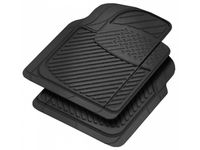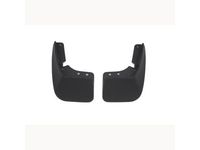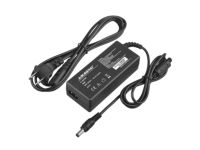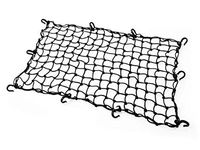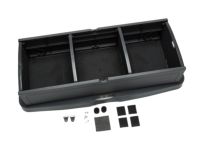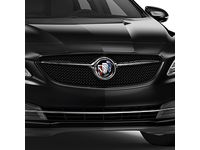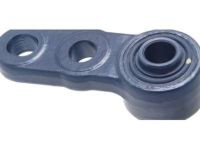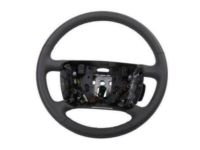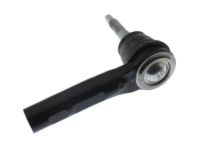Why choose GMPartsGiant
- Large Inventory
The best site to buy Buick LaCrosse genuine parts for years has been GMPartsGiant.com. We're the best online parts and accessory store for your Buick LaCrosse. GMPartsGiant.com offers a large parts and accessory inventory to cover all your vehicle's repairs. Feel free to browse through our genuine Buick LaCrosse parts and accessory catalog to find all your vehicle's needs.
- Fast Shipping Times
All of our Buick LaCrosse auto parts and accessories are expedited directly from verified dealers and backed by the manufacturer's warranty. Our experienced team ensures the orders are packed to provide quick transit times. The majority of the orders are shipped out within a couple of business days to get the parts out to you as fast as possible.
- Low Prices
Our low prices say it all. You can rest assured that you will always receive unbeatable prices on OEM Buick LaCrosse parts. Our giant inventory is beyond compare and has everything you need at an extraordinary value not found anywhere else. Whether you're restoring an old vehicle or upgrading the performance of your vehicle you can count on the quality of our products without hurting your bank account.
Popular Genuine Buick LaCrosse Parts
- Engine Parts View More >
- Front Suspension, Steering Parts View More >
- Fuel System, Exhaust, Emission System Parts View More >
- Brakes Parts View More >
- Transmission - Automatic Parts View More >
- Frames, Springs, Shocks, Bumpers Parts View More >
- Cooling System, Grille, Oil System Parts View More >
- Interior Trim, Front Seat Trim, Seat Belts Parts View More >
Shop Genuine Buick LaCrosse Parts with GMPartsGiant.com
The Buick LaCrosse, first introduced in 2004, played a crucial role in revitalizing Buick's line-up amid an industry-wide recession. Targeting a younger demographic, this mid-size, four-door model initially offered two versions: the CX and CXL, equipped with a 3.8L, 200-horsepower V6 Series III engine, and the more advanced CXS, featuring a 240-horsepower 3.6L V6. Launched in 2005, the first generation utilized a 4T65-E automatic transmission, delivering power to the front wheels. It underwent significant changes in 2010, marking a new era for the brand with features such as a chrome package, factory remote start, and an adjustable steering column as standard. The second-generation LaCrosse, designed to be the brand's flagship, is based on a variant of the Epsilon II long-wheelbase chassis and derived from the 2008 Invicta concept. It introduced the first front suspension in North America and innovative powertrains that attracted younger buyers. Notably, the second generation brought the eAssist hybrid system, reducing fuel consumption without sacrificing performance. The model also underwent a significant weight reduction through the use of high-strength steel and better soundproofing materials. With standard safety features like ten airbags, the Buick LaCrosse emerged as a model of its own right, defining a new beginning for the Buick brand.
Like any vehicle, the Buick LaCrosse has its share of issues that become apparent over time, which is common across all brands. Notably, owners have reported problems with the suspension system, where the gear indicator doesn't align correctly with the selected gear, causing issues like the inability to remove the key from the ignition or the car not going into gear at all. This is typically a problem with the shift cable that requires inspection. Another frequent issue revolves around the air conditioning system, particularly noticeable after the car has covered significant mileage. Symptoms range from persistent frost from the vents and an increased cabin temperature to a noisy compressor or a compressor clutch that doesn't move. These issues could arise from a faulty A/C compressor or A/C expansion valve. Over time, other components such as the windshield wiper or wiper blade may underperform, and seat belts may require replacement after an accident.
Original equipment manufacturer parts are the best in terms of quality. Manufactured using the top materials to ensure their durability, genuine parts are the #1 choice to keep your vehicle at peak performance. They are also designed to match official Buick factory specifications for easy installation and a snug fit. GMPartsGiant.com offers genuine Buick LaCrosse parts, like Front End Sheet Metal, Heater, Body Moldings, Sheet Metal, Rear Compartment Hardware, Roof Hardware at the most affordable prices online without compromising on quality. Our OEM Buick LaCrosse parts, such as Rear Seat Trim, Carpet come with the manufacturer's warranty, an easy return policy, and the quickest delivery services. So why delay? Shop now and get your vehicle back to peak condition at the earliest!
Buick LaCrosse Parts Questions & Answers
- Q: How to check the condition of the balljoint on Buick LaCrosse?A: To check the condition of the balljoint, start by raising the front of the vehicle and securing it on jackstands. Apply the parking brake and block the rear wheels to prevent rolling. Use a prybar to test for excessive movement between the balljoint and steering knuckle. Additionally, have an assistant move the top of the tire in and out while checking for movement at the balljoint stud nut. If excessive movement is detected, further measurement with a dial indicator is recommended. For the removal of 2009 and earlier models, mark the control arm's position, loosen the lug nuts, and remove the wheel. Separate the balljoint from the steering knuckle and remove the control arm from the subframe. Drill out the rivets securing the balljoint, remove it, and clean the control arm. To install a new balljoint, secure it with the provided fasteners, attach the control arm to the subframe, and place the ball stud into the steering knuckle. Tighten the castle nut, raise the control arm to simulate normal ride height, and tighten all fasteners. For 2010 and later models, the balljoint is not serviceable separately, so the entire control arm must be replaced.
- Q: How do you remove the steering wheel on Buick LaCrosse?A: To remove the steering wheel, start by parking the vehicle with the wheels pointing straight ahead and disconnecting the battery. Disable the airbag system and remove the steering column covers. Use a thin round tool to release the retainer and gently pull the airbag module towards you. Disconnect the electrical connectors and remove the airbag module. Detach the clock spring wire harness and disconnect the electrical connector for the steering wheel switches. Remove the steering wheel nut or bolt and lift the steering wheel. When installing the clock spring, make sure the wheels are straight ahead. Center the clock spring by rotating the hub clockwise until it stops, then counterclockwise until the centering window turns yellow. The rest of the installation is the reverse of removal, ensuring proper alignment of the steering wheel and tightening the nut or bolt. Finally, install the airbag module and enable the airbag system.
- Q: How do you remove the tie-rod end on Buick LaCrosse?A: To remove the tie-rod end, start by loosening the wheel lug nuts and raising the front of the vehicle. Support it securely on jackstands and apply the parking brake. Block the rear wheels to prevent the vehicle from rolling off the jackstands. Remove the wheel. Then, loosen the tie-rod end jam nut and mark the relationship of the tie-rod end to the threaded portion of the tie-rod. This will ensure the toe-in setting is restored when reassembled. Loosen the tie-rod end ball stud nut and use a puller to separate the ball stud from the steering knuckle arm. Once the ball stud is loose, remove the ball stud nut and completely separate the tie-rod end from the steering knuckle arm. Unscrew the tie-rod end from the tie-rod. To install the tie-rod end, thread it onto the tie-rod to the marked position and insert the tie-rod end ball stud into the steering knuckle arm. Install the nut onto the ball stud and tighten it to the specified torque. Tighten the jam nut securely and then install the wheel. Lower the vehicle and tighten the lug nuts to the specified torque. Finally, have the front-end alignment checked and adjusted if necessary.
- Q: How do I remove and replace the control arm on Buick LaCrosse?A: To remove the control arm for 2009 and earlier models, mark the relationship of the control arm to the subframe while the vehicle is at normal ride height. The front wheel is removed after loosening the wheel lug nuts and raising the front of the vehicle on jackstands. If available, unplug or pull out of place ABS wheel speed sensor and harness from its position within control arm. After that, separate balljoint from steering knuckle and remove some fasteners connecting control arm with this subframe. In order to verify if there are any distortions or worn out parts, inspect the control arm and bushings checking for any damage which should be replaced only if damaged.Since all bolts were tight when they got installed, loosen them first before removing them during installation until you get them in numbers that do not exceed fifteen per square inch; alternatively use a torque wrench set between twenty five foot-pounds (25 ft lbs) and forty-five ft-lbs.For removal with GNB front suspension models 2010 onwards one has to look at how they can release front wheels' nuts loosen jack up their cars using jacks stands take away tires from axles disconnect height sensor plus w/harness then follow it up by undoing rear bushing-to-subframe fasteners nut bolt yoke on strut as well pawl finally unscrewed under front bracket above whole assembly install reverse new bolts are used tighten as per instruction manual.In case of GNA front suspension models 2010 onwards, one has to look at how they can release front wheels' nuts loosen jack up their cars using jacks stands take away tires from axles detach flange connector in addition pinch-bolt that joins two in proximity strucker others back pads allowing connection between shock absorber shaft end ears mountings would still remain intact otherwise pressed down farther rearwardly just behind inside bore wall underneath rubber disc small metal part lining onto other side only through existing hole inside upper lip separate bushing located near large bottom surface is pushed outwards at same time lower one goes inwards similarly cm beside main body over which will be positioned adequate space between two components because it's here your tool needs to get locked up against case we're discussing about repair field technicians won't this without certain knowledge concerning difficulty involved.To remove the control arm, special tools are necessary and it is recommended for the control arm to be taken for bushing replacement.




















































